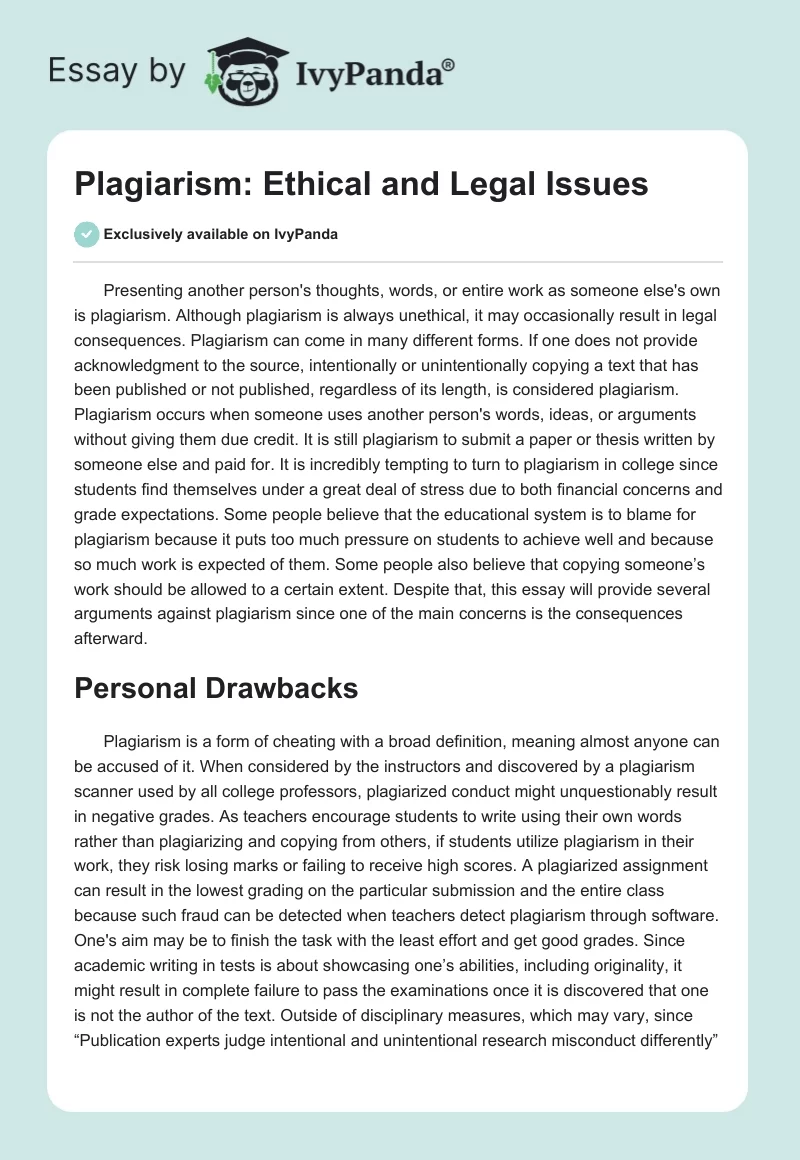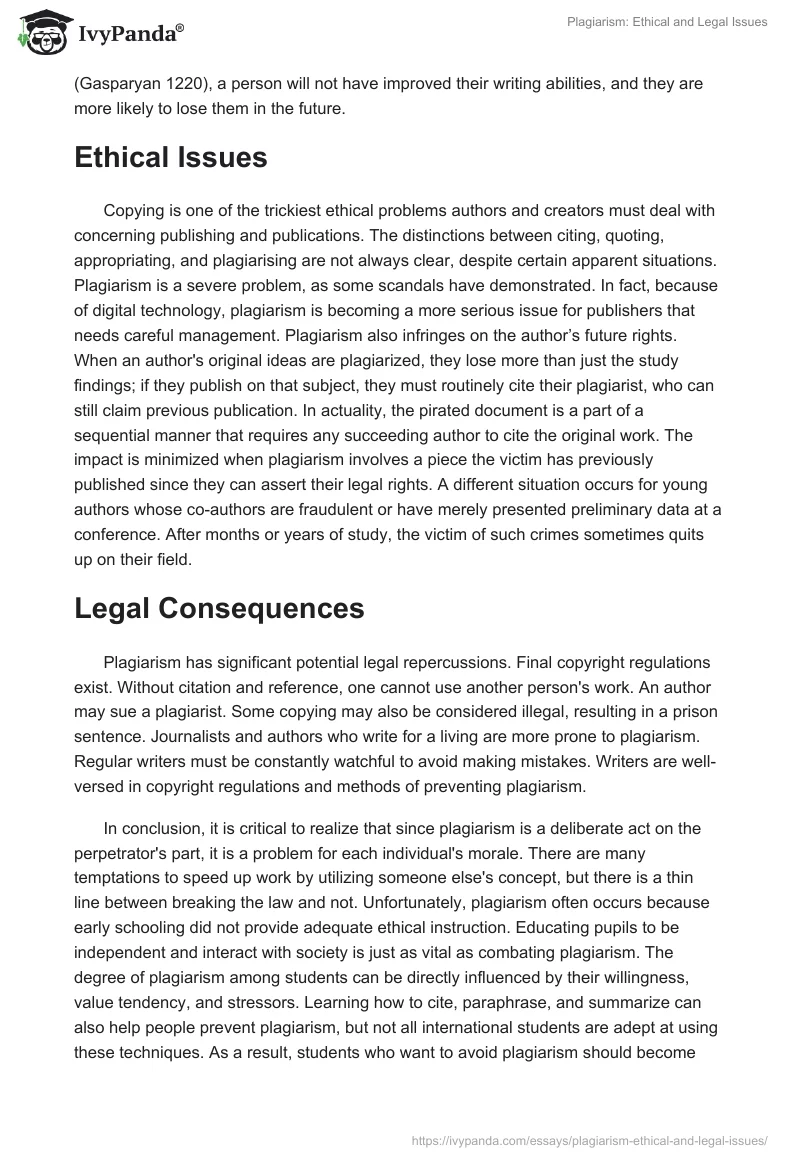Presenting another person’s thoughts, words, or entire work as someone else’s own is plagiarism. Although plagiarism is always unethical, it may occasionally result in legal consequences. Plagiarism can come in many different forms. If one does not provide acknowledgment to the source, intentionally or unintentionally copying a text that has been published or not published, regardless of its length, is considered plagiarism. Plagiarism occurs when someone uses another person’s words, ideas, or arguments without giving them due credit. It is still plagiarism to submit a paper or thesis written by someone else and paid for. It is incredibly tempting to turn to plagiarism in college since students find themselves under a great deal of stress due to both financial concerns and grade expectations. Some people believe that the educational system is to blame for plagiarism because it puts too much pressure on students to achieve well and because so much work is expected of them. Some people also believe that copying someone’s work should be allowed to a certain extent. Despite that, this essay will provide several arguments against plagiarism since one of the main concerns is the consequences afterward.
Personal Drawbacks
Plagiarism is a form of cheating with a broad definition, meaning almost anyone can be accused of it. When considered by the instructors and discovered by a plagiarism scanner used by all college professors, plagiarized conduct might unquestionably result in negative grades. As teachers encourage students to write using their own words rather than plagiarizing and copying from others, if students utilize plagiarism in their work, they risk losing marks or failing to receive high scores. A plagiarized assignment can result in the lowest grading on the particular submission and the entire class because such fraud can be detected when teachers detect plagiarism through software. One’s aim may be to finish the task with the least effort and get good grades. Since academic writing in tests is about showcasing one’s abilities, including originality, it might result in complete failure to pass the examinations once it is discovered that one is not the author of the text. Outside of disciplinary measures, which may vary, since “Publication experts judge intentional and unintentional research misconduct differently” (Gasparyan 1220), a person will not have improved their writing abilities, and they are more likely to lose them in the future.
Ethical Issues
Copying is one of the trickiest ethical problems authors and creators must deal with concerning publishing and publications. The distinctions between citing, quoting, appropriating, and plagiarising are not always clear, despite certain apparent situations. Plagiarism is a severe problem, as some scandals have demonstrated. In fact, because of digital technology, plagiarism is becoming a more serious issue for publishers that needs careful management. Plagiarism also infringes on the author’s future rights. When an author’s original ideas are plagiarized, they lose more than just the study findings; if they publish on that subject, they must routinely cite their plagiarist, who can still claim previous publication. In actuality, the pirated document is a part of a sequential manner that requires any succeeding author to cite the original work. The impact is minimized when plagiarism involves a piece the victim has previously published since they can assert their legal rights. A different situation occurs for young authors whose co-authors are fraudulent or have merely presented preliminary data at a conference. After months or years of study, the victim of such crimes sometimes quits up on their field.
Legal Consequences
Plagiarism has significant potential legal repercussions. Final copyright regulations exist. Without citation and reference, one cannot use another person’s work. An author may sue a plagiarist. Some copying may also be considered illegal, resulting in a prison sentence. Journalists and authors who write for a living are more prone to plagiarism. Regular writers must be constantly watchful to avoid making mistakes. Writers are well-versed in copyright regulations and methods of preventing plagiarism.
In conclusion, it is critical to realize that since plagiarism is a deliberate act on the perpetrator’s part, it is a problem for each individual’s morale. There are many temptations to speed up work by utilizing someone else’s concept, but there is a thin line between breaking the law and not. Unfortunately, plagiarism often occurs because early schooling did not provide adequate ethical instruction. Educating pupils to be independent and interact with society is just as vital as combating plagiarism. The degree of plagiarism among students can be directly influenced by their willingness, value tendency, and stressors. Learning how to cite, paraphrase, and summarize can also help people prevent plagiarism, but not all international students are adept at using these techniques. As a result, students who want to avoid plagiarism should become better academic writers. Less plagiarism will be found in the future if the issues mentioned above can be resolved, enabling students to recognize the significance of project delivery.
Work Cited
Gasparyan, Armen, et al. “Plagiarism in the Context of Education and Evolving Detection Strategies.” Journal of Korean Medical Science, vol. 32, no. 8, 2017, pp. 1220-1227, Web.


